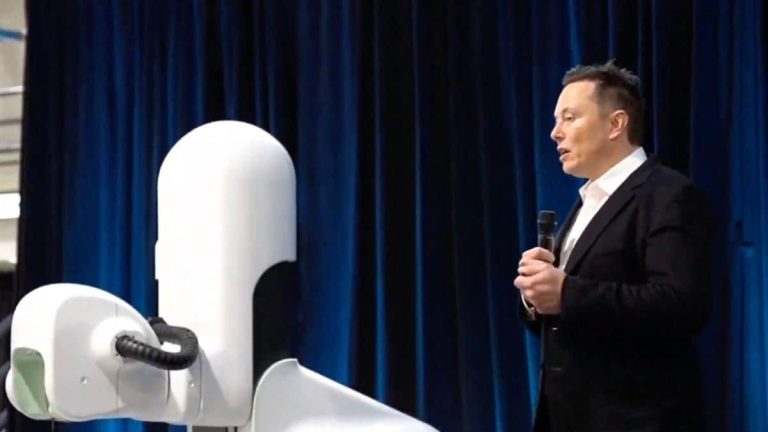
The video shows Elon Musk standing next to the surgical robot during his Neuralink presentation. (Source: Agence France-Presse)
This technology is able to record and decode nerve signals and then transmit the information back to the brain using electrical stimulation
Elon Musk said that his startup, Neuralink, which specializes in manufacturing brain chips, installed a brain implant in its first human patient on Sunday and that he is recovering well.
Musk said in a post on X (formerly Twitter) that the first product from Neuralink will be called Telepathy. He added that preliminary results show a promising discovery of neuronal spikes.
The company's goal is to connect human brains to computers and wants to help treat complex neurological conditions. According to Musk, telepathy will enable you to “control your phone or computer, and through them almost any device, just by thinking.”
What is Neuralink?
Neuralink is a neurotechnology company that Musk co-founded with a team of scientists and engineers in 2016 to build direct communication channels between the brain and computers.
The goal is to enhance human capabilities, treat neurological disorders such as amyotrophic lateral sclerosis or Parkinson's disease, and ultimately achieve a symbiotic relationship between humans and artificial intelligence.
This technology is able to record and decode nerve signals and then transmit the information back to the brain using electrical stimulation.
As of last year, the California-based company had more than 400 employees and had raised at least $363 million.
Neuralink is also developing an app that will allow anyone to manipulate a keyboard and mouse using only their brain.
How does Neuralink brain implantation work?
Neuralink opened the study trial for recruitment last September. It received approval from US regulatory authorities to test its implantation in the brain in humans.
The technology will work primarily through an implant called a 'linker' – a device the size of five stacked coins that is placed inside the human brain through an invasive surgery. The device is designed to connect human brains directly to computers.
The devices will contain electrodes capable of recording neural activity and stimulating specific areas of the brain.
According to reports, Neuralink's core technology works in the same way as electrophysiology. Electrochemical signals are triggered in the nervous system when neurons communicate with each other across gaps between neurons known as synapses, according to BuiltIn.
Brain activity is captured by electrodes or monitors that detect voltages and measure the change in spikes when the voltages fire. Or in other words, our brain activity data is captured not only when we take action, but also if we think about taking action.
Researchers hope the implant's powers will also treat paralysis, spinal cord injuries and brain disorders.
But do brain transplants actually work?
Brain transplants, long conceived as science fiction, have slowly evolved into practicality with several companies except Neuralink offering ways and means to connect our brains to computers.
Billions of dollars are pouring into a host of specialist companies searching for treatments for some of the most debilitating diseases.
In 2014, for the first time in history, a paralyzed person regained the ability to move his arm using only his thoughts — with a little help from a device implanted in his brain after he agreed to be part of a pilot trial of the Brain-Computer Interface (BCI), which links activity Human nervous system with technology.
Last year, a paralyzed Swiss man, who lost the use of his arms after a fall, became the first person to test a new technology that reads his thoughts using artificial intelligence and then transmits signals through his nervous system to his arms, hands and fingers. In order to restore movement.
The treatment, which consists of a combination of a brain-computer interface and a spinal implant, had previously allowed a paraplegic patient to walk again, a breakthrough published in the scientific journal Nature in May.
(With inputs from agencies)


